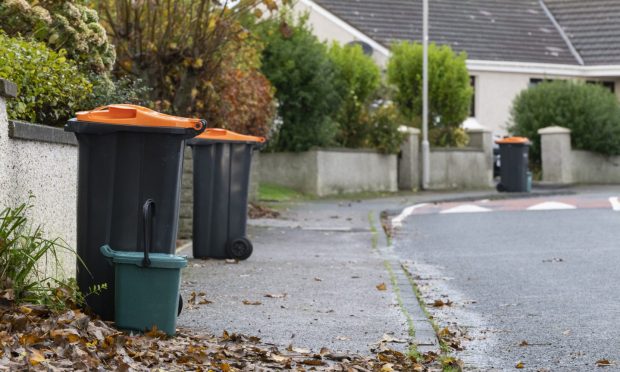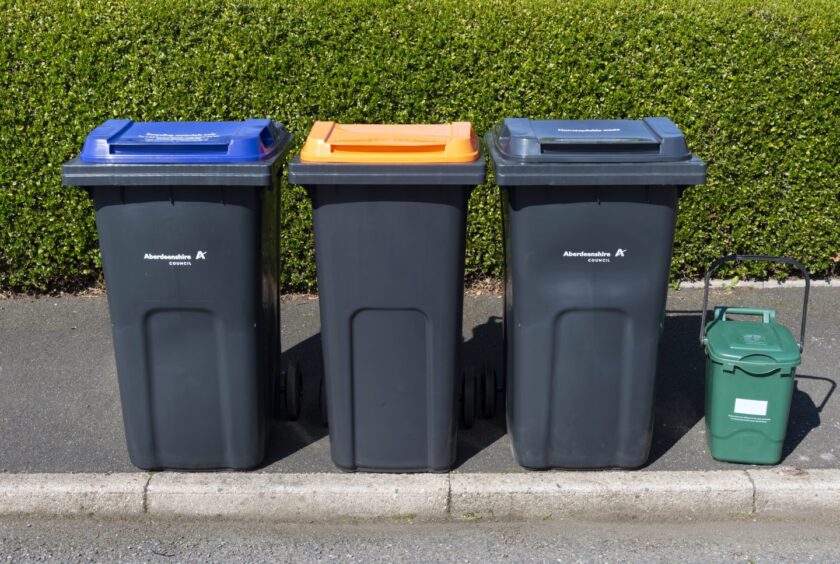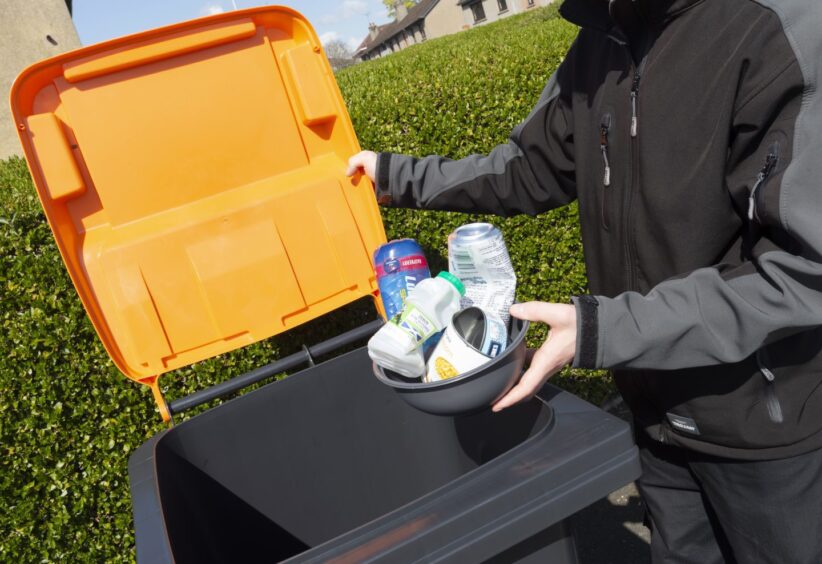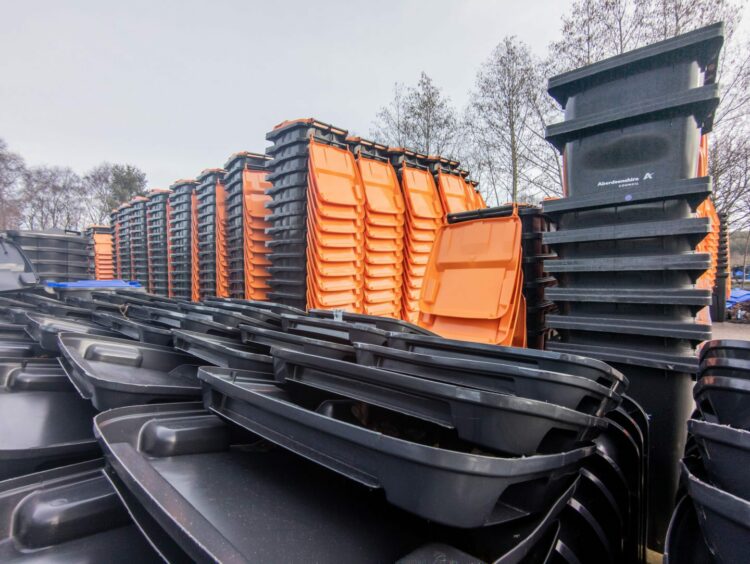More than 60,000 orange-lid bins have been delivered to homes as part of an Aberdeenshire-wide rollout — but has it had any impact yet on recycling?
In April, Aberdeenshire Council started introducing a third bin to households as part of a £4 million plan to increase recycling rates.
Once entirely in place, more than 120,000 homes in Aberdeenshire will have to get used to the new three-bin, three-week collection system.
This means instead of general waste bins being emptied every second week, they will only be picked up every third week.
While some argued the new kerbside pick-up cycle would be too complicated or confusing, others raised concerns about where some households would find space for a third bin.
And some members of the council’s own bin crews even warned it would be an “absolute disaster”.
We spoke with the council to find out more about how the rollout has been working out so far.
Where have orange-lidded bins been introduced so far?
The local authority has passed the halfway point with more than 60,000 orange-lid bins now delivered to homes across the region.
Residents in Kincardine and Mearns were the first to receive their new bins.
This region incorporates communities like Stonehaven, Portlethen, Newtonhill, Drumoak and Inverbervie.
The new kerbside collection were then rolled out across the Marr and Garioch regions, but there are still three areas of Aberdeenshire yet to receive their new bins.
Have you received your orange-lid bin? Let us know how you’ve found the change in the comment section below
How has the orange bin rollout impacted recycling in Aberdeenshire?
The new orange-lid bins are for metal tins, cans, aerosols, foil, food and drink cartons, plastic bottles, pots, tubs and trays.
The average contamination rate (the amount of wrong stuff) in orange lid bins has been just 16.94% since the service has gone live, which the local authority has described as a “strong performance”.
Nationally, contamination rates can be between 16% and 36%, according to the council’s contracted recycling service for mixed containers.
Since the rollout, contamination raters for the paper, card and cardboard blue-lid bins have been “vastly reduced” to just 3%.
Because more of the fibre in the blue bins is left clean and unsullied by contaminants, the council is able to save taxpayer’s money by avoiding having to pay for expensive extra sorting processes.
Councillor Isobel Davidson explained the new system has not been “without its hiccups”, but stressed the results have so far been “encouraging”.
She said: “Both residents and staff across the council — from front-line crews to customer service — have been adapting and learning lessons as each area rolls out.
“It has not been without its hiccups, but, as each area beds into this new service over some weeks, the results are encouraging—particularly this far into a major rollout.”
More Aberdeenshire homes are ordering food waste bins following the change
One of the main aims of the three-bin change was to reduce the frequency of general waste pick-ups from every two weeks, to every three weeks instead.
By reducing how often residents can empty their general waste bins, the council is seeking to persuade more people to recycle and properly dispose of more of their waste, instead of just sticking it in the general waste bin.
And there’s signs this is already having an impact, as more food caddies are being requested than in 2022.
Last year, the council found that 22.7% of all rubbish put into black general waste bins was food waste — which should really be going into the little green food caddies provided to households.
With more of these caddies being ordered, the council believes this is a sign more households are choosing to dispose of their food waste properly.
Food waste accounts for 18% of all household waste by weight in Scotland, but 30% of all households’ carbon impact from waste.
Increased use of the food caddies instead will have that food waste converted into compost for use in local agricultural farms.
Food waste caddies can be collected for free from your local household recycling centres.
When will other areas in Aberdeenshire get their orange-lidded bins?
Aberdeenshire residents serviced by the council’s depots in Macduff, Mintlaw and Ellon still haven’t had the three-bin change introduced.
But it will be coming to these three regions in the coming months.
Households serviced by the Macduff depot will be the next in line to get their new orange lid bins delivered, and the rollout in this area will start on October 23.
Residents should keep an eye out for a letter informing them of the coming changes that includes a new service booklet with everything they need to know, as well as a schedule for when to start using the new orange-lid bin.
The orange-lid bins will continue to be rolled out across Aberdeenshire until March 2024.
Community events have been organised to give residents the opportunity to ask questions about the changes to kerbside collections in person for the next stage of the rollout.
Here’s where and when they will run if you want to attend:
- October 13: Turriff Library, The Square, Turriff — 9.30am to 1pm
- October 31: Macduff Library, High Street, Macduff — 11am to 3pm
- November 9: Huntly Library, The Square, Huntly — 2pm to 6pm
- November 16: Whitehills Library, Loch Street, Banff — 2pm to 4pm
- November 22: Rosehearty Library, Pitsligo Street, Fraserburgh — 10am to noon
- November 23: Rosehearty Library, Pitsligo Street, Fraserburgh — 2pm to 6pm
- November 30: Aberchirder Library, Smith Street, Aberchirder — 9.30am to 12.30pm
Local community groups can also contact the waste@aberdeenshire.gov.uk inbox to request a community waste officer to attend their events and present about the changes.







Conversation